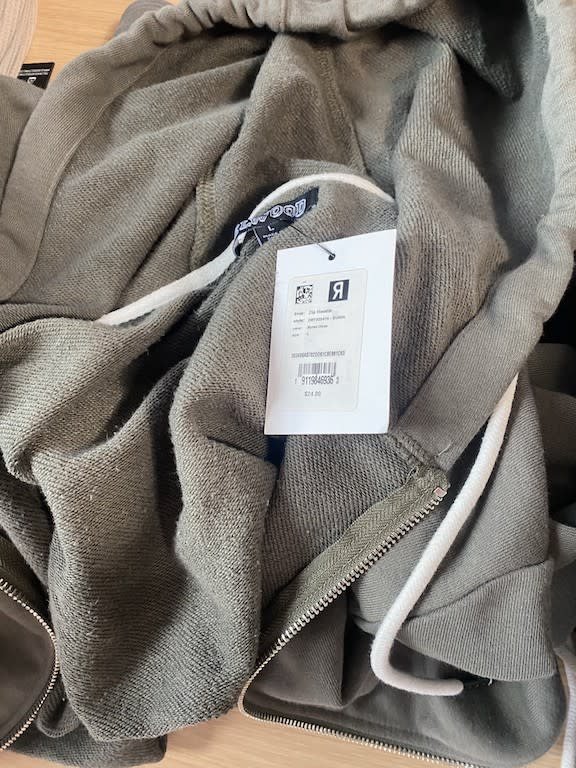Radar’s RFID Tech ‘Like Having Google Maps on Your Phone’ in Stores

A New York-based in-store technology provider believes it has the key to improve inventory efficiency, help store associates quickly locate in-store merchandise and enhance store-based e-commerce fulfillment with a single solution.
Radar, a platform that provides RFID (radio frequency identification) and computer vision technology to track in-store inventory, has seen a banner year in 2023. In March it announced that American Eagle Outfitters (AEO) was deploying its technology in 500 U.S. stores. Radar is currently piloting the platform with two other unnamed Fortune 500 retailers.
More from Sourcing Journal
Avery Dennison Helps Amazon Expand Just Walk Out Tech to Apparel
Retail Tech: Oracle x Uber, Maersk and Fabric Automate Dallas Warehouse
Just months later Radar announced a $30 million Series A funding round. It’s raised $63 million to date.
Radar’s technology leverages camera-equipped computer vision sensors on a store ceiling to identify individual RFID-tagged products with 99-plus percent coordinate accuracy. This information is relayed to a mobile app where staff can identify the precise location of individual items in a store, and discover exactly which sizes and colors are available. The sensors also scan humans, and can provide 3D models to illustrate where shoppers and workers are in relation to the product on the floor.

Spencer Hewett, founder and CEO of Radar, told Sourcing Journal during a recent demo that the technology “helps you make sure you have what the customer wants at all times, because we know if it’s missing immediately.”
When American Eagle was trialling the platform, a store associate trying to find an item for a customer discovered it was listed as unavailable in the inventory management system. But after checking the Radar app, the associate identified that one unit was still available in the store behind the cash wrap, hidden in a box.
“Those types of experiences are what Radar enables for associates to have the confidence that if it’s there, they know where it is for sure,” Hewett said. “And if it’s not there, they know it’s definitely not there. It saves them time from having to check the back. A lot of times, retailer’s systems will say something’s there in the back, and the associate will go looking for it for 10 to 15 minutes and not find it. The customer leaves disappointed, and we eliminate that situation.”

For retailers, Hewett said, Radar is “like having Google Maps on your phone for items indoors.” The app is available for iOS, and Android is launching at a later date. Any time an item is picked up or moved within the store, Radar’s technology picks up the signal in real time so the viewer knows exactly where it has been moved.
With retailers trying to improve inventory management after last year’s pileup, the solution gives merchants a better view of where they can fine-tune ordering on a store-by-store basis. This way, they can “drip feed” products to stores when they need it, he said.
“You’re basically giving them only as much as they need to the right store at the right time,” said Hewett. “And you’re moving them through at a faster velocity, which generally means you’re moving it at a higher margin.”
Radar’s inventory optimization technology doesn’t just benefit the stores. As more retailers enable customers to buy online, and pick-up in store (BOPIS), retailers can expand the amount of inventory that they put online if each store reports accurate data.
“If you don’t have accurate inventory, you can’t put 100 percent of your items into your store online, and sell them because you don’t actually know if they’re there,” Hewett said. “The worst case scenario is you have a customer that’s coming into buy online pick-up in store, and then it’s not there.”
Beyond the inventory management and store operations capabilities, the next steps for Radar include more robust analytics functions and even store checkout. Now that the technology reports the position for every single item in the store, Radar can extend e-commerce-only statistics like conversion per SKU into the physical store. The company expects to launch a checkout product at a later time. Hewett envisions it automatically charging shoppers based on the products they select.
Hewett said Radar was fortunate to have an early investor, Beanstalk Ventures, that was “deeply networked” in the retail space. A managing partner at the venture capital firm introduced Hewett to AEO’s chief operating officer, Michael Rempell, which led to the partnership and jumpstarted the firm’s growth.

